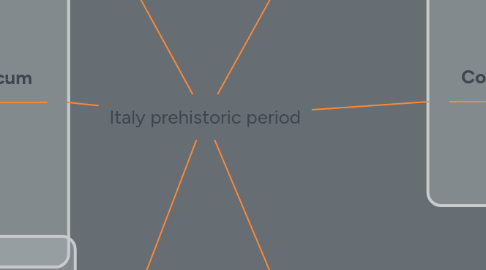Italy prehistoric period
by Btari Kinar Dahayu

1. New stone age
1.1. There was a big change about 5000 BC when Neolithic (New Stone Age) people arrived in Italy. These people seem to have come from Greece, in boats following the coastline and they already had New Stone Age technology when they arrived: they knew how to farm and how to make pottery and build houses.
2. megalithicum
2.1. They look as if they were dropped in place by a race of giants. As a matter of fact, folklore still refers to them in many parts of Europe as 'tombs of the giants'. Indeed, there are otherwise rational persons (because they refuse to believe in giants) who will look you in the eye and tell you that alien creatures with advanced technology must have levitated these things into place from orbiting spacecraft. They are 'megaliths'—from the Greek, meaning 'large stones'. The most famous group of megaliths is Stonehenge on the Salisbury plain in southern England, but hundreds of other, smaller, sites exist in Europe from central Sweden down through Spain, France, Italy and the Mediterranean islands.
3. Bronze age
3.1. The Italian Bronze Age has traditionally been dated by reference to central European metalwork and to eastern Mediterranean imports. The growing availability of radiocarbon dates (although these are still quite rare) and, more importantly, dendrochronological dating of Alpine wetland sites, both in Italy and farther north, has meant that a more accurate dating scheme is being worked out. The dating of the end of the Bronze Age is still quite controversial, with most scholars arguing for a point between 1000 and 900 b.c. The Italian Bronze Age is conventionally divided into four segments: the Early Bronze Age (2300–1700 b.c.), the Middle Bronze Age (1700–1350 b.c.), the Recent Bronze Age (1350–1150 b.c.), and the Final Bronze Age (1150–950 b.c.).
4. Old stone period
4.1. Homo sapiens came in the upper paleolithic. ( old stone age ) about 10,000 bc. These people's DNA shows that they came to Italy from West Asia. They left some more stone tools, and some engravings of animals on cave walls and on bone, but nothing as fancy as the great cave paintings of France and Spain at this time. There must still not have been very many people in Italy.
5. Copper age
5.1. During the period between the 4th and 3rd millennia BC, profound changes for the ancient populations inhabiting the northern region of Italy occurred. The first Indo-European migrations were altering the ethnographic characteristics and, with the production of the first copper artifacts, the Neolithic Age was drawing to an end. The most significant testimony of that dramatic period is unquestionably the Otztal iceman.
6. Iron age
6.1. The transition from Bronze Age to Iron Age societies in Sicily was accomplished by about 900 B. C. in Sicily and somewhat later on the peninsula of Italy itself. There were no massive migrations, but a steady influx of peoples from the regions of the Danube and Aegean brought the technology for smelting iron from its ores with them.


